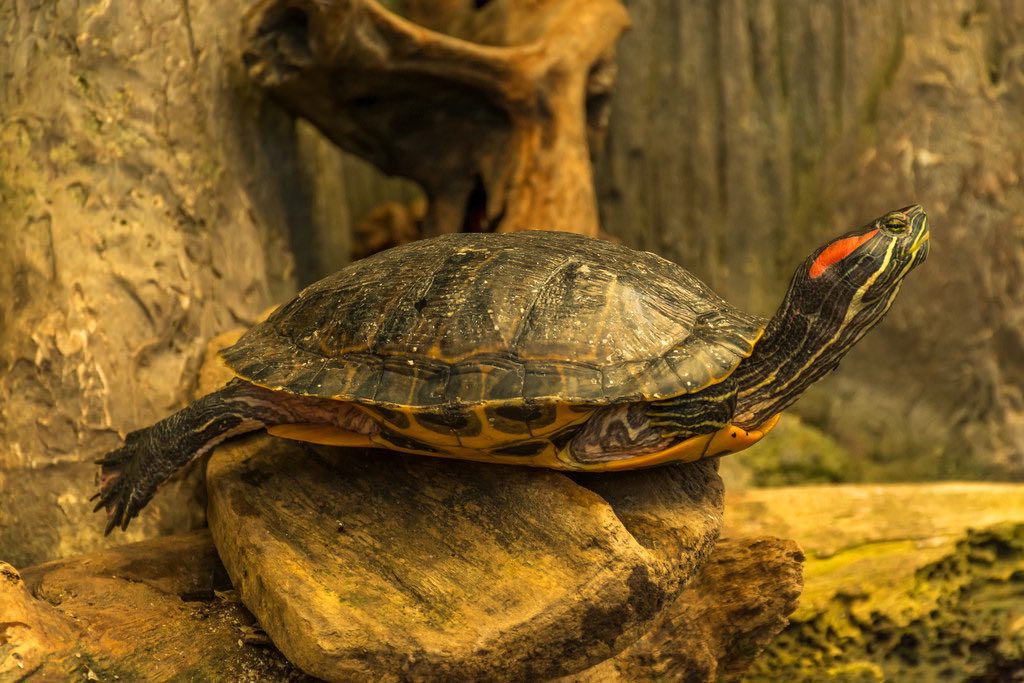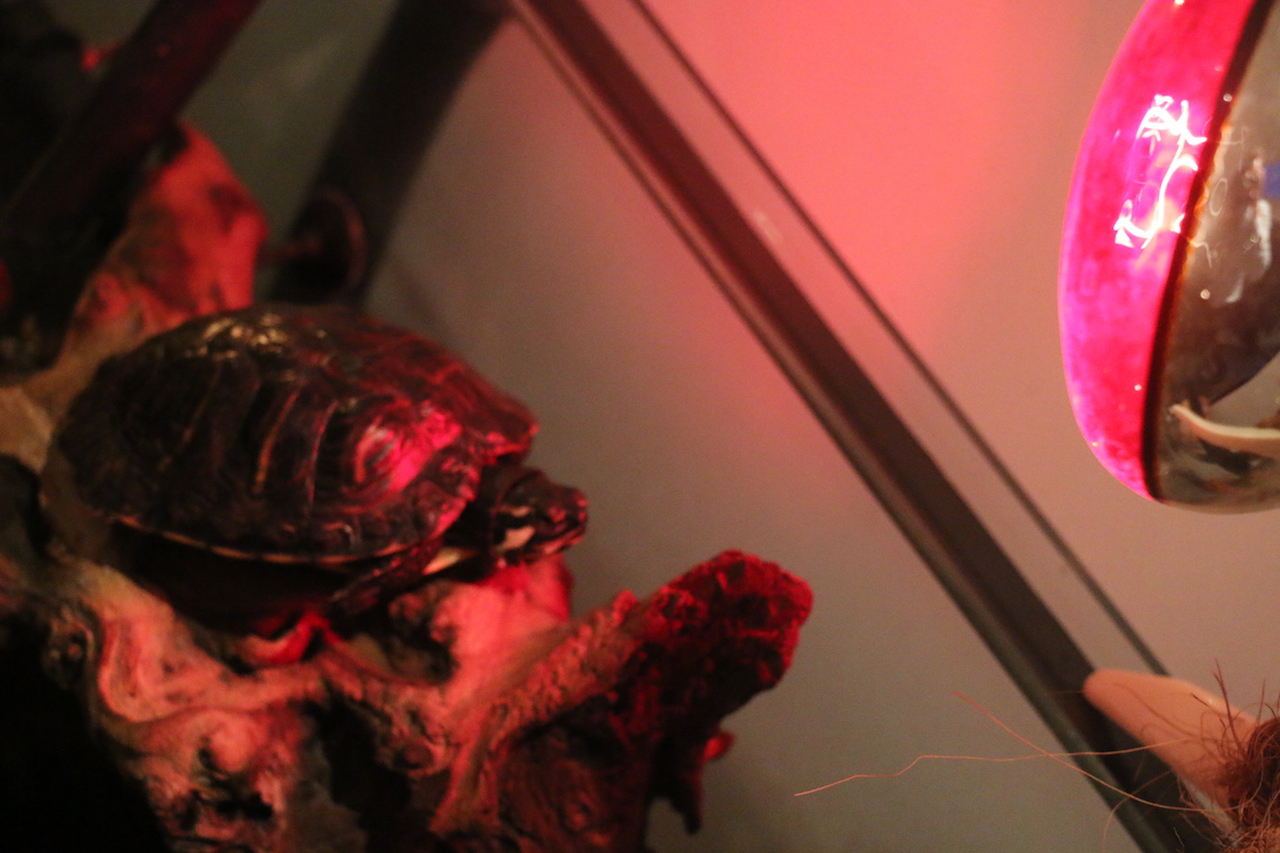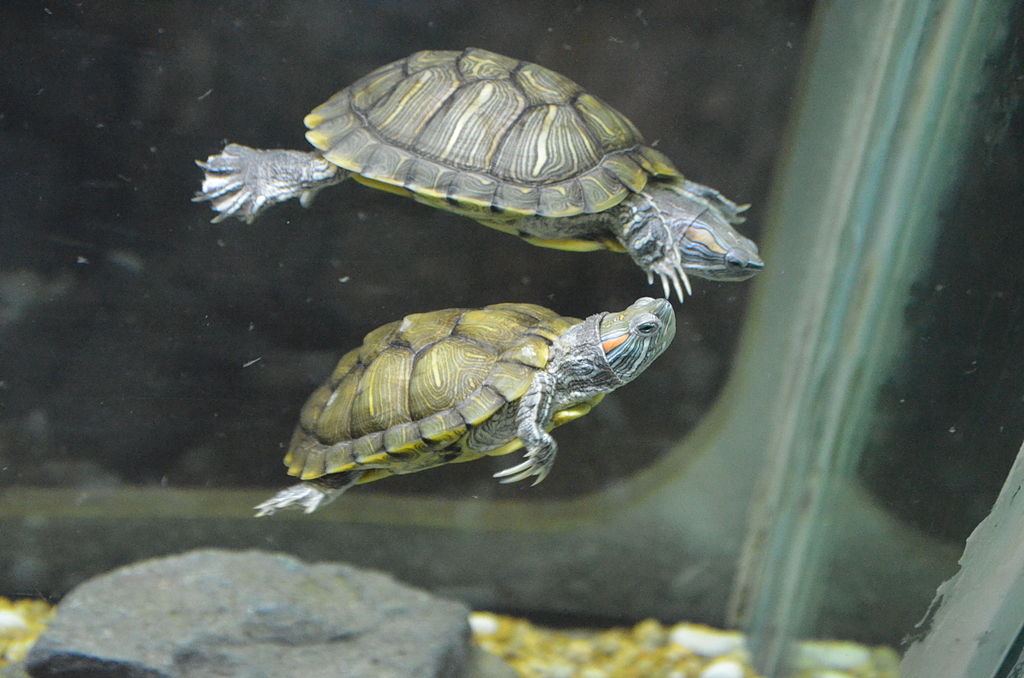HABITAT - ENVIRONMENT
Environment
Whether you keep your turtle indoors in a paludarium or outdoors in a pond, it’s best to adapt your turtle’s environment to its natural habitat. This habitat differs from species to species. Nevertheless, there are some general rules:
- Ensure that your turtle’s environment is quiet.
- Make sure that your turtle can enjoy sufficient sunshine while also providing shelter.
Quiet environment
Turtles are sensitive to stress. What’s more, they are easily frightened; when scared, they quickly dive into the water. This is a natural reaction which could save the animal’s life in the wild. However, it’s better to avoid this kind of stress by ensuring that your turtle lives in a quiet environment. This prevents your turtle from feeling like a hunted wild animal.
Summer sun
Turtles need vitamin D3 which they absorb from sunlight or a sunlight replacement UVB lamp. Turtles love to sunbathe so make sure that your turtle can enjoy a sunny spot in the garden or on the balcony or even in a pond during the summer.
Make sure that your turtle doesn’t get too hot in the sun:
- Never put a glass paludarium in the sun: because of the glass, temperatures can get extremely hot. You may have experienced this yourself!
- Ensure that your turtle can access an area of shade so that it can take shelter if it gets too hot. It’s important to create an area of shade but it shouldn’t cover the turtle’s entire habitat; make sure that your turtle spends at least half a day in the sunshine, particularly on an area of land.
Be careful! You don’t want your turtle to become prey for other animals. Close the paludarium properly when you put your turtle outside. Magpies, herons, cats and moles are all very fond of turtles. A tightly closed paludarium also keeps out draughts and helps to protect your pet from catching a cold or developing pneumonia.


